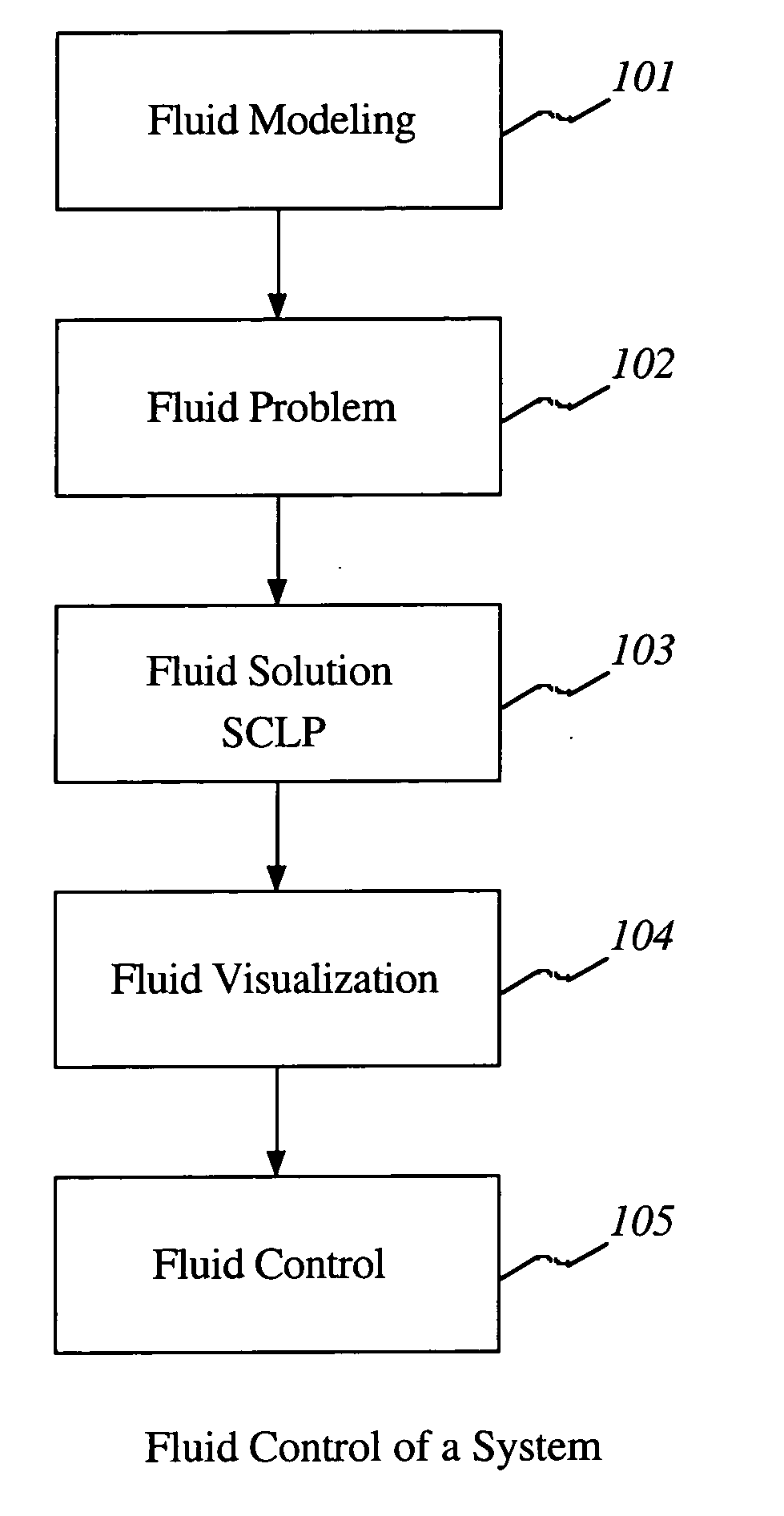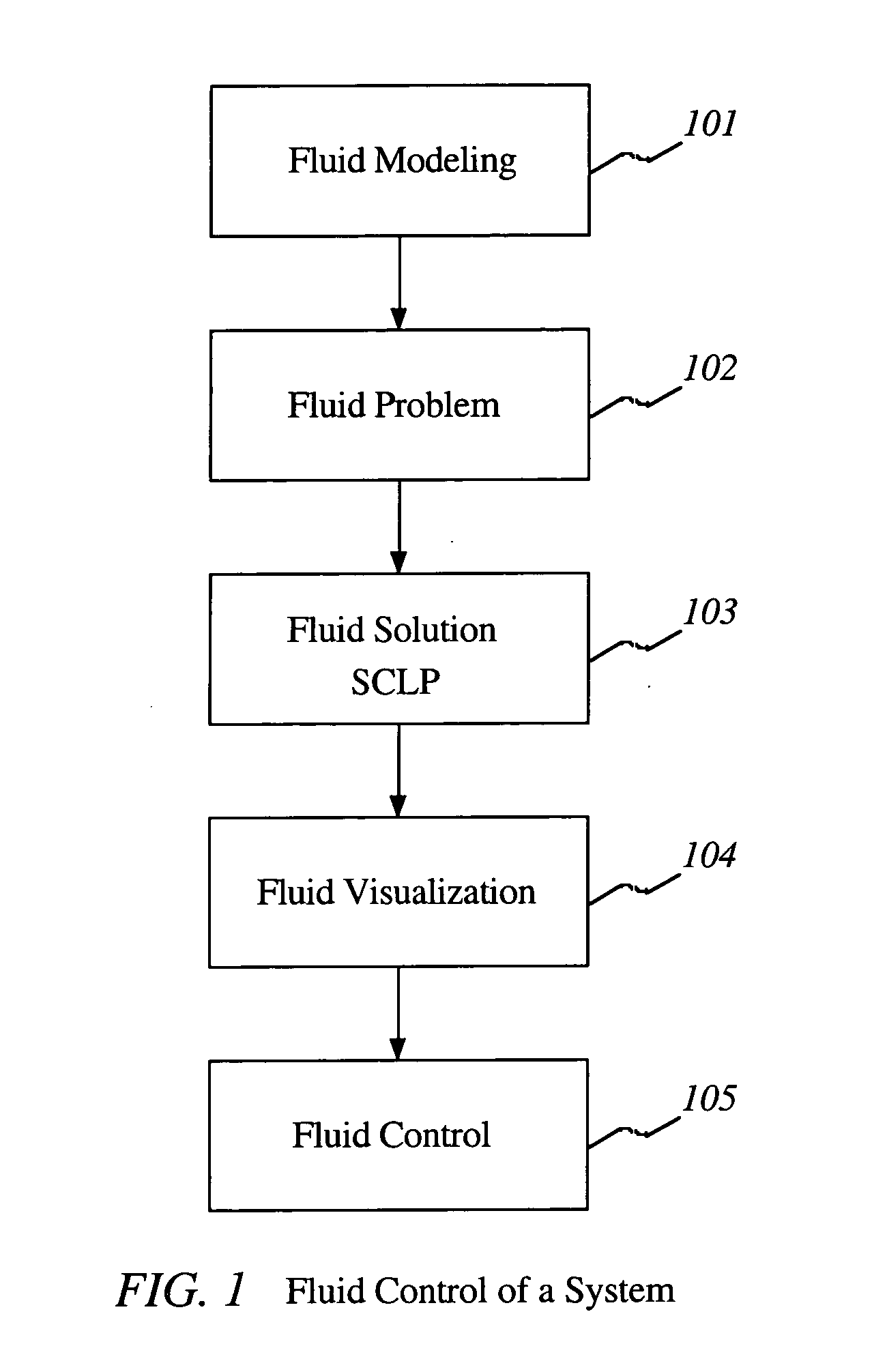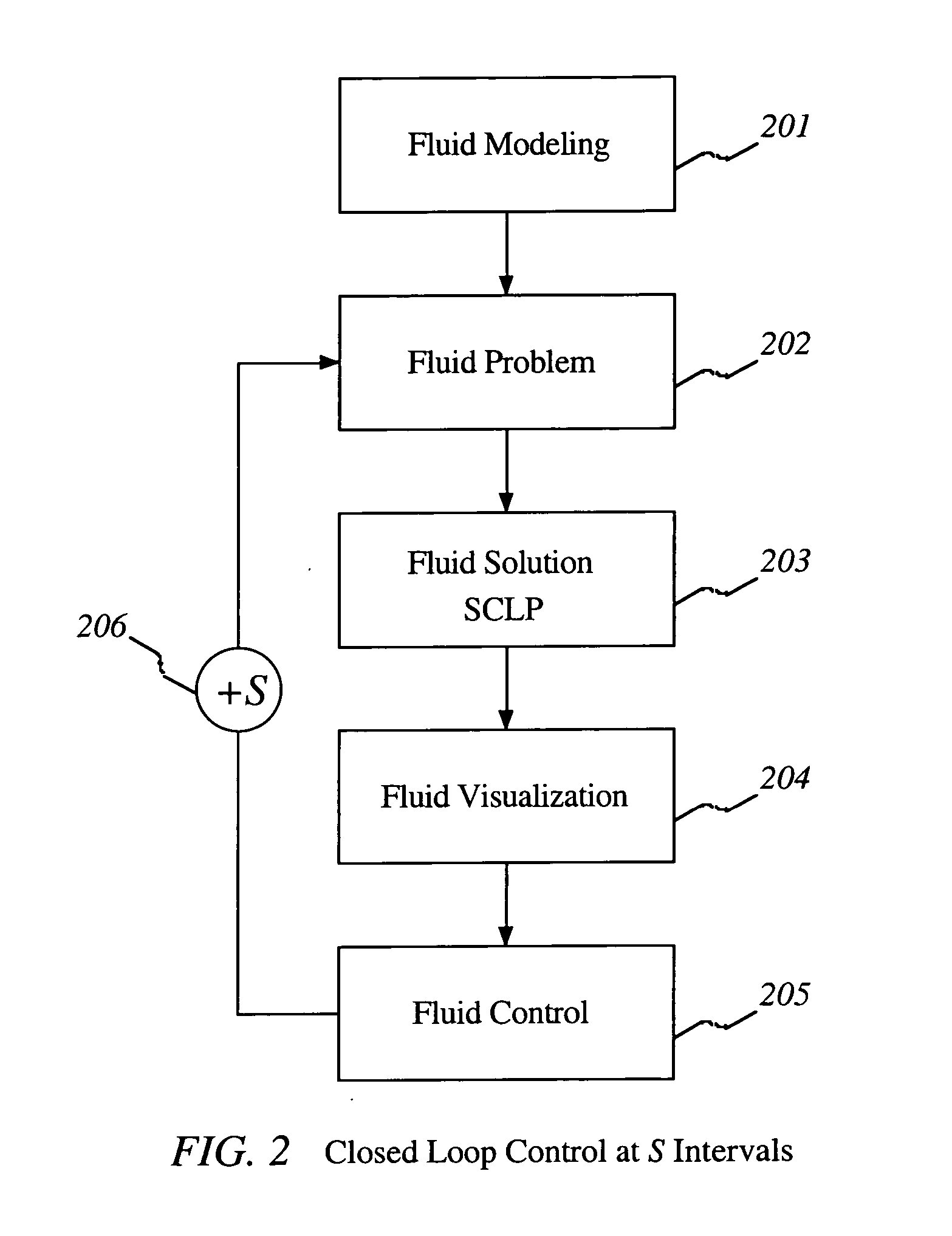Control of items in a complex system by using fluid models and solving continuous linear programs
a technology of complex systems and fluid models, applied in the field of system control, can solve problems such as inability to find optimal solutions, inability to find optimal controls, and inability to solve optimal solutions
- Summary
- Abstract
- Description
- Claims
- Application Information
AI Technical Summary
Benefits of technology
Problems solved by technology
Method used
Image
Examples
fifth embodiment
the fluid modeling stage of our methods and apparatus includes the case when the real system is a supply chain management system. Exogenous input to the system are orders placed with the system for particular dates, and each order generates a backlog of timed requests for items along the supply chain. Buffers of the fluid model approximate the level of demand of items backlogged along the supply chain, and the controls are the processing rates along the supply chain, subject to lead times and to limited capacities.
1.6 Fluid Modeling of Economic Systems
A sixth embodiment of the fluid modeling stage of our methods and apparatus includes the case when the real system is an input output economic system. Here xk(t) is the level of assets of type k available to the system at time t, uj(t) is the level of activity of type j, and the jth column of the matrix G includes a positive entry in position k(j) and negative or zero entries in all other positions l≠k(j), such that Glj: l≠k(j) are ...
PUM
 Login to View More
Login to View More Abstract
Description
Claims
Application Information
 Login to View More
Login to View More - R&D
- Intellectual Property
- Life Sciences
- Materials
- Tech Scout
- Unparalleled Data Quality
- Higher Quality Content
- 60% Fewer Hallucinations
Browse by: Latest US Patents, China's latest patents, Technical Efficacy Thesaurus, Application Domain, Technology Topic, Popular Technical Reports.
© 2025 PatSnap. All rights reserved.Legal|Privacy policy|Modern Slavery Act Transparency Statement|Sitemap|About US| Contact US: help@patsnap.com



